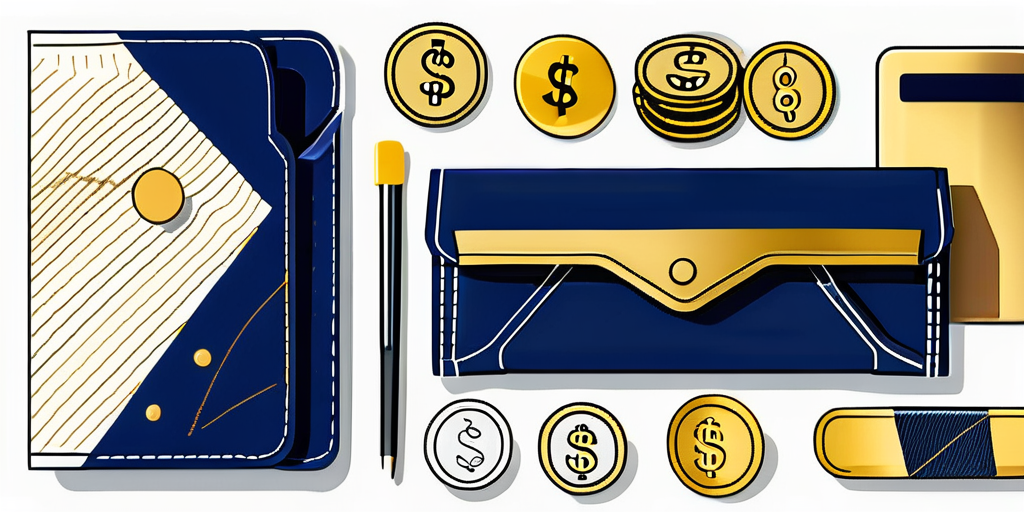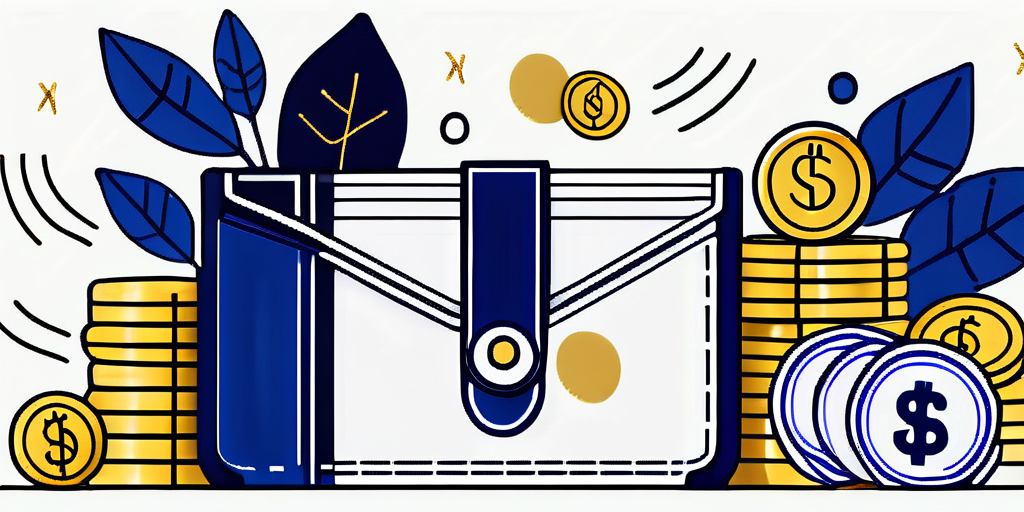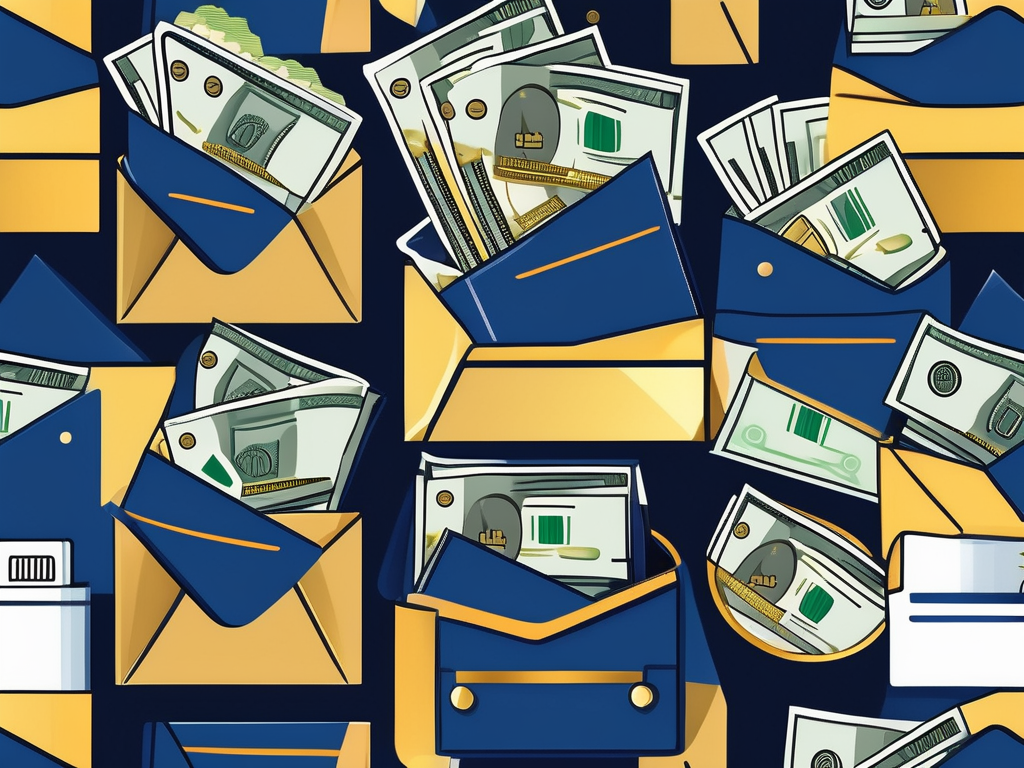Are you struggling to manage your finances and find yourself constantly overspending? Do you want a simple, effective way to take control of your spending and save more money? Look no further than the cash envelope system. In this ultimate guide, we will walk you through everything you need to know about using this popular budgeting method. From understanding the basics to setting up your own system, we've got you covered. Let's dive in!
Understanding the Cash Envelope System
Before we jump into the details, let's start by understanding what the cash envelope system is all about.
The cash envelope system is a budgeting method where you allocate specific amounts of cash to different spending categories. Instead of relying solely on your credit or debit card, you use physical envelopes filled with cash for your expenses. Each envelope represents a different budget category, such as groceries, entertainment, or transportation.
Implementing the cash envelope system requires careful planning and organization. You need to determine your budget categories and allocate the appropriate amount of cash to each envelope. This process allows you to have a clear understanding of how much money you have available for each expense category.
One of the benefits of using the cash envelope system is that it helps you stay accountable and prevents overspending. Since you can only spend what's in each envelope, you are forced to be more mindful of your spending habits. This method encourages you to think twice before making a purchase and helps you avoid unnecessary impulse buys.
In addition to accountability, the cash envelope system provides a visual representation of your spending. By physically seeing the cash in each envelope decrease as you make purchases, you have a tangible reminder of how much money you have left for that particular category. This visual cue makes it easier to track and manage your money effectively.
Another advantage of the cash envelope system is that it encourages you to prioritize your spending and make intentional choices about where your money goes. By allocating a specific amount of cash to each category, you are forced to consider which expenses are essential and which ones can be reduced or eliminated. This method helps you align your spending with your financial goals and values.
While the cash envelope system has many advantages, it's essential to be aware of potential drawbacks. One challenge is the inconvenience of carrying cash and constantly replenishing envelopes. Unlike using a credit or debit card, which offers convenience and ease of use, the cash envelope system requires you to have physical cash on hand at all times. This can be cumbersome, especially if you are not accustomed to carrying cash.
Additionally, certain expenses, such as online purchases or automatic bill payments, may not be suitable for using cash envelopes. In today's digital age, many transactions are conducted online, and relying solely on cash can limit your ability to make these types of payments. It's important to consider these limitations and find alternative methods for managing these expenses while still utilizing the cash envelope system for other categories.
In conclusion, the cash envelope system is a budgeting method that offers numerous benefits, such as accountability, visual representation of spending, and intentional choices. However, it also comes with challenges, including the inconvenience of carrying cash and limitations for certain types of expenses. By understanding these aspects, you can decide if the cash envelope system is the right budgeting method for you.
Setting Up Your Cash Envelope System
Ready to set up your own cash envelope system? Let's get started!
A cash envelope system is a budgeting method that involves using physical envelopes to allocate and track your spending. By using cash instead of cards, you are more aware of your spending habits and can better control your expenses. Here's a step-by-step guide to help you set up your cash envelope system:
Determining Your Budget Categories
The first step is to identify your budget categories. Take a close look at your spending habits and determine which areas need the most attention. Common categories include groceries, dining out, entertainment, transportation, and personal care.
For example, if you find that you spend a significant amount of money on dining out, you may want to create a separate envelope specifically for that category. This will help you allocate a specific amount of cash for dining out and prevent overspending.
It's important to be thorough and consider all aspects of your expenses. Don't forget to include categories such as subscriptions, gifts, and miscellaneous expenses.
Allocating Cash to Each Envelope
Now that you have your budget categories, it's time to determine how much cash to allocate to each envelope. Analyze your spending history and set realistic limits for each category. Be sure to leave a little room for unexpected expenses.
Start by listing all your budget categories on a piece of paper or a spreadsheet. Next to each category, write down the amount of cash you want to allocate for that category. This will give you a clear overview of how much cash you need in total.
Once you have determined the total amount, divide it among your envelopes. You can use actual envelopes, or if you prefer a more organized approach, you can use a wallet with multiple compartments or a dedicated cash envelope system wallet.
Label each envelope with the corresponding category and put the allocated cash inside. This will help you visually see how much money you have left for each category and prevent overspending.
Adjusting Your Budget Over Time
Remember, your budget is not set in stone. It's essential to review and adjust your cash allocation periodically. As your financial situation changes, you may need to reallocate funds or create new categories. Be flexible and adapt your system as needed.
For example, if you notice that you consistently overspend in a particular category, you may need to reduce the cash allocation for that envelope and redistribute it to another category. On the other hand, if you find that you have extra cash left over in a category, you can either save it or allocate it to another area of your budget.
Regularly reviewing your budget and making adjustments will help you stay on track and ensure that your cash envelope system is effective in helping you reach your financial goals.
Remember, setting up a cash envelope system requires discipline and commitment. It may take some time to get used to the new way of managing your finances, but with practice, it will become second nature. Stick to your budget, track your expenses, and enjoy the sense of control and financial freedom that comes with using a cash envelope system.
Tips for Successful Cash Envelope System Usage
Now that your cash envelope system is up and running, let's explore some tips to help you make the most of it.

Managing your finances can be a daunting task, but with the cash envelope system, you have taken a significant step towards achieving financial stability. However, there are always situations that require some extra planning and consideration. Here are some tips to help you navigate unexpected expenses, surplus cash, and common pitfalls.
How to Handle Unexpected Expenses
Life is full of surprises, and unexpected expenses are bound to arise. It's crucial to have a plan for handling these situations within your cash envelope system. While your envelopes may be allocated for specific purposes, such as groceries, utilities, or entertainment, it's essential to create an emergency fund envelope or consider allocating a portion of your envelopes for unpredictable costs.
Having a dedicated envelope for unexpected expenses ensures that you are prepared for any financial curveballs that come your way. Whether it's a car repair, medical bill, or home maintenance, having a separate envelope allows you to set aside funds specifically for these situations. By doing so, you can avoid dipping into your other envelopes and disrupting your budgeting system.
Dealing with Surplus Cash
What happens when you have leftover cash at the end of a month? Instead of splurging on unnecessary purchases, consider saving it. The cash envelope system not only helps you manage your expenses but also provides an opportunity to build your savings.
One option is to create an envelope specifically for savings. This envelope can be used to accumulate money over time, allowing you to work towards your financial goals, whether it's a down payment for a house, a dream vacation, or simply a rainy day fund. By setting aside the surplus cash, you are taking a proactive step towards securing your financial future.
Alternatively, if you have outstanding debts, you can put the extra money towards paying them off. By allocating the surplus cash towards debt repayment, you can expedite the process of becoming debt-free and ultimately improve your financial situation.
Strategies for Avoiding Common Pitfalls
While the cash envelope system is an effective budgeting tool, it's essential to stay mindful of potential pitfalls. One common challenge is the temptation to borrow cash from other envelopes.
When faced with a situation where you find yourself short on funds in one envelope, it may be tempting to borrow from another envelope to cover the shortfall. However, this can lead to a breakdown in your budgeting system and defeat the purpose of the cash envelope system.
To avoid this pitfall, it's crucial to set clear guidelines for yourself and be disciplined in sticking to your budget. If you find that you consistently need to borrow from other envelopes, it may be a sign that you need to reevaluate your budget and make adjustments accordingly. Remember, the cash envelope system is designed to help you stay on track and achieve your financial goals, so it's important to use it responsibly.
In conclusion, the cash envelope system is a powerful tool for managing your finances. By following these tips and incorporating them into your budgeting routine, you can maximize the benefits of the cash envelope system and take control of your financial future.
Transitioning to a Cash Envelope System
If you're ready to give the cash envelope system a try, here's how to make a smooth transition.

Preparing for the Switch
Gather the necessary supplies for your cash envelope system. You'll need envelopes, a secure place to store them, and some creativity to make the envelopes visually appealing and organized.
Gradual Transition vs. Cold Turkey
Decide whether you want to transition gradually or dive in all at once. Some prefer to start with a few envelopes and gradually add more as they get comfortable. Others prefer cold turkey and switch all expenses to cash envelopes right away. Choose the approach that suits your personality and circumstances.
Evaluating Your Progress and Making Adjustments
As you use the cash envelope system, take time to evaluate your progress regularly. Are you staying within your budget? Is the system working for you? Make adjustments as necessary to ensure the system fits your needs and helps you achieve your financial goals.
With this ultimate guide, you now have the tools and knowledge to successfully implement a cash envelope system. Remember to stay disciplined, review your progress regularly, and be flexible. Before you know it, you'll be on your way to financial freedom and peace of mind.
Ready to take your financial savvy to the next level? With Tiblio, you're not just managing your daily expenses; you're revolutionizing the way you interact with the capital markets.
Embrace the power of direct, algorithmic control over your investments and join a community that's leading the transformative shift in personal finance. Don't let this opportunity slip through your fingers.
Join now and be a part of the change with Tiblio.
